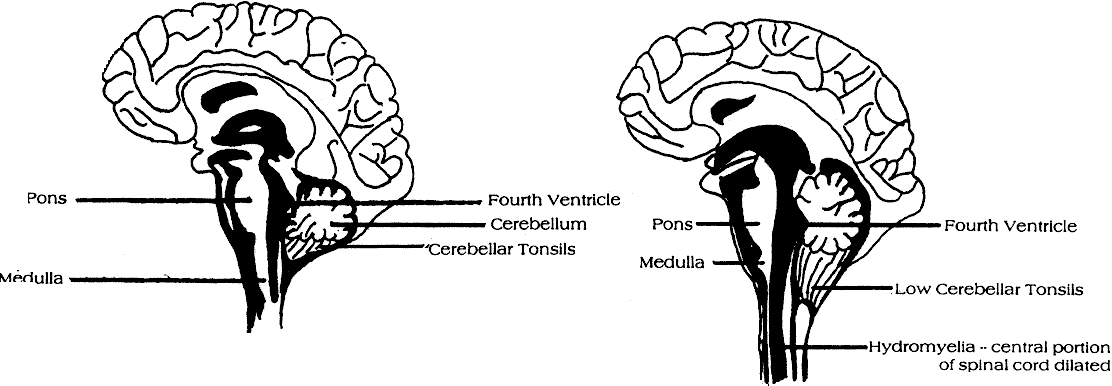ARNOLD CHIARI MALFORMATION
The Arnold Chiari malformation, sometimes referred to as the Chiari II malformation or ACM is an anomaly of the brain, which occurs in almost all children born with spina bifida. It mainly involves the lower brainstem and lowermost portion of the cerebellum, but the anatomy of the whole brain is affected.
The brainstem is the origin of many of the nerves, which control the heart, breathing, blood pressure, and help control swallowing, sneezing and coughing.
The cerebellum controls the maintenance of posture and coordination of muscle action to produce precise, coordinated movements.
When the Chiari Malformation is present, the brainstem is elongated, and displaced into the opening at the base of the skull and into the top of the spinal canal. It is often kinked. The brainstem, cranial nerves and the lower portion of the cerebellum may be stretched or compressed. Therefore, any of the functions controlled by these areas may be affected.
Many people with the Arnold Chiari malformation may have no obvious symptoms. In babies, the most common symptoms are a weak or absent cry, stridor (a harsh croupy noise associated with breathing), arching of the neck, apnoea, colour change, failure to thrive and feeding/swallowing difficulties.
Toddlers may present with arm weakness, stiff neck and feeding or breathing difficulties.
Symptoms in adults are swallowing difficulties, dizziness, unsteady gait, neck pain and arm weakness.
If any of these symptoms are present, medical advice is needed.
Treatment may involve decompressing the brainstem by surgically removing part of some of the cervical vertebrae and the lowest part of the skull.

NORMAL BRAIN CHIARI MALFORMATION